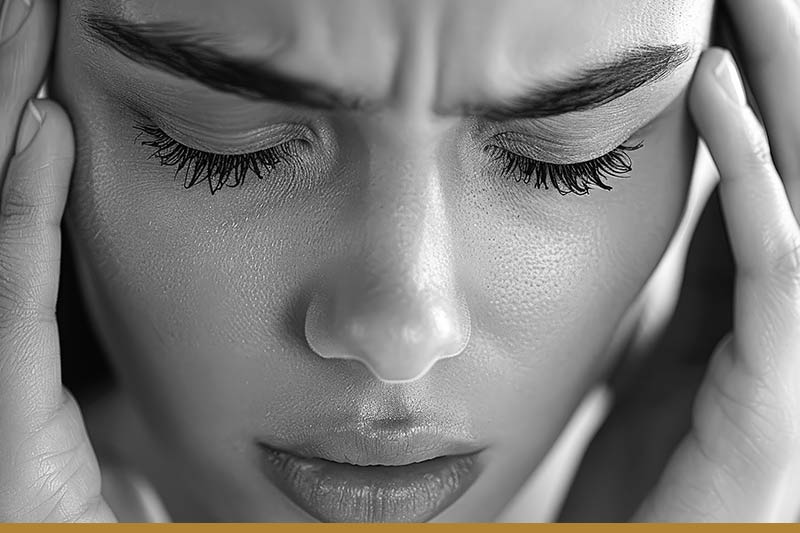The nervous system, which consists of a wide network of nerves extending through our body and relaying information from different organs and tissues, is responsible for regulating our emotions. Automatic, involuntary actions of these nerves mediate much of what we feel and experience. One of the largest and most important nerves in our body is the vagus nerve.
This article details all we should know about the vagus nerve. Though it regulates involuntary activities, we can make certain changes in life to engage the vagus nerve and improve its function.

The vagus nerve, also known as cranial nerve X, is the primary nerve in the parasympathetic nervous system – a branch of the autonomic nervous system responsible for “rest and digest” functions. These include heart rate, respiratory rate, digestion, and certain reflex actions like coughing and swallowing. The vagus nerve works in balance with the sympathetic nervous system, which governs the “fight or flight” response.
The vagus nerve is composed of sensory and motor fibers. The sensory neurons transmit information from different organs, such as the lungs, heart, gastrointestinal tract, to the brain via vagal pathways. The motor neurons control various muscles in the pharynx, larynx, and soft palate, and contribute to autonomic regulation of visceral organs through parasympathetic fibers.
The vagus nerve is the longest cranial nerve in the body, extending from the medulla oblongata (the lowest part of the brainstem) through the neck, chest, and into the abdomen. It connects the brain to various organs, including the heart, lungs, and digestive tract.
The vagus nerve consists of two main branches, the left and the right vagus nerves, which travel down either side of the body. In the chest, they form an esophageal plexus around the esophagus and enter the abdomen as the anterior and posterior vagal trunks.
Vagal nerves receive sensory input from and provide motor and parasympathetic output to the following areas:
Vagal nerves extend into multiple branches that innervate the organs from the head to the abdomen, including the following:
The vagus nerve controls involuntary sensory and motor activities, mediating the following functions:
One of the vagus nerve’s primary functions is to help the body calm and rest physical or emotional stress. It transmits signals from the brain to the rest of the body, letting the body know that the danger or physical/emotional stress has passed.
By activating the parasympathetic nervous system, the vagus nerve helps counteract the effects of the sympathetic nervous system, which is responsible for the “fight or flight” response, including increased heart rate and heightened stress.
Note: To learn more about the subject, read our blog post on stress and hormones to learn how the endocrine system is involved in our mental health.
Vagus nerve stimulation (VNS) is a medical procedure that involves sending electrical impulses to the left vagus nerve to modulate brain activity and improve vagus nerve disorders. There are two types of VNS devices:
Vagus nerve stimulation is designed to improve conditions related to vagus nerve disorders. Currently, it is approved for epilepsy, treatment-resistant depression, stroke rehabilitation, and cluster headaches. Scientists are exploring its potential for treating rheumatoid arthritis, inflammatory bowel disease, Alzheimer’s, obesity, and other conditions.

Vagus nerve stimulation shows promise in the treatment of stress-related psychiatric disorders, particularly post-traumatic stress disorder (PTSD) and severe depression. Studies show it may modulate the patient’s autonomic response and enhance recovery from acute traumatic stress.
Health experts also recognize a potential for relieving emotional stress through lifestyle practices that strengthen the vagus nerve, such as regular exercise, healthy sleep, and meditation.
Besides stress relief, researchers have found the following beneficial effects of vagus nerve stimulation:
Surgical vagus nerve stimulation can cause certain side effects. These include:
Non-invasive VNS comes with fewer and less severe side effects, such as skin irritation, headaches, and voice changes.
Natural vagus nerve stimulation through lifestyle changes is safe and can only improve overall health.
Medical vagus nerve stimulation can help patients with certain chronic conditions that don’t respond to traditional treatments, such as medications and psychotherapy. The conditions include drug-resistant epilepsy, treatment-resistant depression, and cluster headaches.
The treatment can also help stroke patients to regain their arm motor function and cognitive skills. Surgical and non-invasive VNS treatments require consultation with a healthcare provider.
People dealing with stress-related health issues, such as anxiety and burnout, may benefit from natural vagus nerve stimulation through healthier lifestyle practices and relaxing activities.
Certain medical reasons, interventions, and other conditions may prevent you from receiving VNS. These include the following:
Consult your healthcare provider to determine your eligibility for this medical procedure.
Many natural vagus nerve stimulation methods are suitable for everyone, including meditation and a healthier diet.
A healthy vagus nerve can positively impact various health parameters. These natural strategies for toning and strengthening the vagus nerve may improve stress response, reduce anxiety, lower inflammation, and enhance mental health.
The state of our gut significantly impacts the vagus nerve and the signals it sends from the gastrointestinal tract to the brain. A healthy gut promotes a healthy gut-brain connection and supports optimal vagal function.
Foods that help beneficial gut microorganisms thrive are rich in fiber, probiotics, prebiotics, omega-3 fatty acids, polyphenols, and antioxidants. They include fruits and vegetables, lean protein, whole grains, nuts, and seeds. Anti-inflammatory diets like the Mediterranean diet have consistently shown benefits to gut and nervous system health.
Exercise provides more oxygen and energy to the body, which activates the vagus nerve. Regular physical activity helps strengthen it. Some of the best exercises for vagus nerve stimulation include interval and endurance training, tai chi, and yoga.
Deep breathing involves inhaling slowly and deeply through the nose and exhaling through the mouth. The goal is to extend the exhalations, making them longer than the inhalations. This helps maximize oxygen intake, slow the heart rate, lower cortisol levels, and promote relaxation.
Singing and humming create vibrations in the throat and chest that stimulate branches of the vagus nerve involved in vocalization and breathing. These activities help activate the parasympathetic nervous system, promoting a sense of calm.
Meditation is a mindfulness practice that involves various relaxation techniques, including deep breathing, singing, humming, chanting, heightened awareness of the present moment, and other practices that stimulate the vagus nerve.
Massage stimulates and relaxes muscles and nerves in the skin. Gently massaging the neck, area behind the ear, and shoulders may activate the vagus nerve, help reduce stress, and improve mood.
Immersing the body in cold water (50-60°F) for up to 15 minutes may provide certain health benefits, such as improved blood circulation, mood, and immune function. By working to restore its core temperature, the body slows down heart rate and breathing, engaging the vagus nerve and promoting relaxation.
Cold water therapy includes cold water immersion, cold baths, cold showers, etc.
The vagus nerve is one of the largest nerves, connecting the brain with the rest of the body down to the abdomen. It is the primary nerve of the parasympathetic nervous system, which regulates our stress response. Adopting healthier lifestyle practices is the best way to engage and strengthen the vagus nerve. This will help the body adapt to stressful events more easily and improve our overall health.




4325 E Indian School Rd, Suite 130
Phoenix, AZ 85018
United States
(480) 422-2058
info@vibrantvitalityclinic.com
Monday - Friday: 9:00 am - 6:00 pm
Saturday: 9:00 am - 3:00 pm
Sunday: Closed
